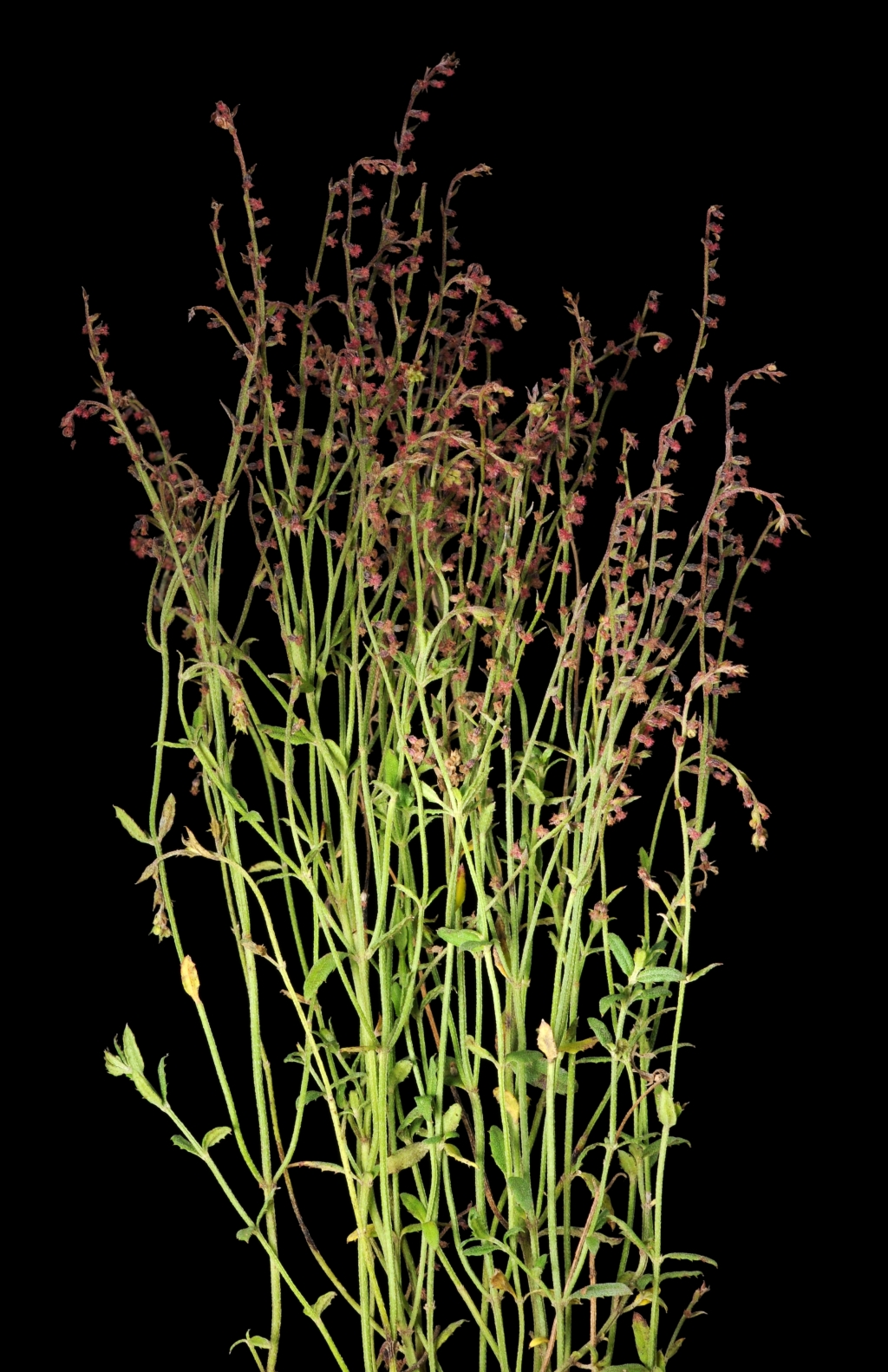Gonocarpus
Annual or perennial herbs or shrubs, glabrous, scabrous or pilose. Leaves alternate, opposite or rarely in whorls of 3, simple, margins entire or serrate. Inflorescences indeterminate racemes or spikes, borne singly in the axils of leaf-like bracts; each subtended by a pair of bracteoles. Flowers bisexual; pedicels short; sepals 4, usually green and triangular, sometimes lanceolate or cordate, often with a prominent median basal callus; petals 4, hooded, keeled, usually shortly clawed; stamens usually 8 (sometimes 4); anthers oblong, 4-celled, non-apiculate; filaments short; ovary incompletely 4-celled, ovoid to hemispherical, variously ribbed and ornamented, never winged, ovules 4, styles usually 4, clavate, stigmas capitate, fimbriate, usually red. Fruit as for ovary; seed 1, occupying the entire fruit.
41 species, mostly in Australia (36 species) and New Zealand, with a few extending to New Guinea, Indonesia, the Philippines, South-east Asia and Japan.
Jeanes, J.A. (1996). Haloragaceae. In: Walsh, N.G.; Entwisle, T.J., Flora of Victoria Vol. 3, Dicotyledons Winteraceae to Myrtaceae, pp. 887–908. Inkata Press, Melbourne.
 Spinning
Spinning



